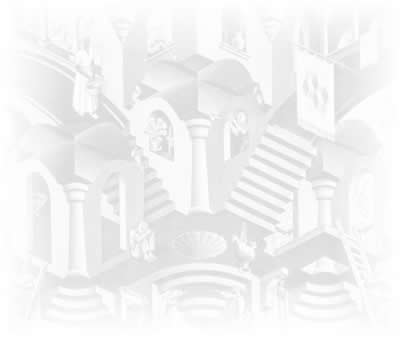 |
||||||||||
Date: February 19, 2025
by Peter F. Carpenter

Editor's Note: The author, Peter Carpenter, is dealing with many of the same things that the rest of our community faces. However, his insights and approach are colored by his past - he was one of the original beta testers for the ARPAnet (the predecessor to today's Internet) when he served in ARPA in the 60's - so he has had a long working relationship with computers and the Internet. He has served as the Executive Director of Stanford University Medical Center - so he understood how academic medical centers work and how the practice of medicine changes over time and with new knowledge. He has spent a number of years as a senior executive at ALZA (a Silicon Valley leading edge pharmaceutical research and product development company) and has played a leading role in developing new ways to inform patients about the risks and benefits of drugs - so he understands how clinical trials are conducted, how new drugs get approved and how innovation occurs in the practice of medicine. He also served as a Visiting Professor of Pharmacoepidemiology at McGill University and as a Visiting Scholar at the Center for Biomedical Ethics at Stanford University. He currently serves on a number of non-profit boards including the Board of Annual Reviews (which publishes reviews in 30 different scientific fields including Medicine, Public Health and Immunology) and on the Advisory Board of the School of Public Health at UC Berkeley. It is clear he has access to some of the best minds and information on the subject.
For additional insights valuable to a newly diagnosed patient, you might want to read Diagnosing Your Doctor by David Arenson.
The opinions expressed here are those of the author(s). CLL Topics does not necessarily share or endorse these opinions.
When I was first diagnosed with CLL (as a result of a routine physical at age 61, without any symptoms) I started down the same path as every other newly diagnosed CLL patient. Fear, anger, the urge to do something and great uncertainty about my future were some of the dominant themes.
Once the initial shock started to recede I realized that I now had a new challenge. I also realized that I had some very valuable assets – my family and friends, access to information and some important past personal experiences. I clearly had some unique experiences, tools and resources with which to work. None of this changed my feelings of fear but focusing on the challenge of managing my CLL allowed me to do something else rather than remaining preoccupied with my fears.
I decided to approach the management of my CLL much as I had approached any challenge that I faced in my professional career – in a systematic manner based on a set of management principles. Some management principles deal with things like profit/loss and competition that were not particularly relevant. However, other management principles deal with things like strategy, decision-making rules and resource management that were more appropriate to the task at hand. So my first rational task, conducted in parallel with the less rational task of dealing with my new fears and suddenly realized mortality, was to adapt what I knew to the specific case of managing my CLL. Here are the results of that effort:
Hopefully these principles will be useful and encourage debate. They are my principles -- each patient needs to make choices based on the resources available and his or her preference for medical autonomy.
Having developed those principles I then proceeded to implement them with a series of specific decisions and actions regarding the management of my CLL.
I kept my family and friends updated on my condition and my decisions. They have been a great source of strength.
In the months since my diagnosis I devoted a lot of effort to learning more about CLL and, with the help of the Internet and my friends, I learned a lot and also discovered some encouraging facts about my personal medical condition. Initially, I was simply told that I had a terminal, untreatable disease and that my physicians' role would be to help me fight off the inevitable infectious diseases that would result from the compromise of my immune system because of the progression of CLL. Not a particularly cheery prognosis.
The immediate impact of my CLL diagnosis was to bring Jane, Jonathan and me to a quick halt in our rush through life. The first few weeks were a time of reflection and re-prioritization. We decided to live each day as if it was my last and that has been, and continues to be, a wonderful decision.
As I dug deeper into the science of CLL I discovered that the local experts weren’t! Most CLL 'experts' treat all CLL patients as having the same disease. It turns out that a Professor (Terry Hamblin) in the UK discovered in 1999 that there were two very different types of CLL and that there was a gene marker that could be used to determine which type an individual had. Furthermore, of the two types, one was very aggressive and should be treated immediately while the second type was very benign and would probably never need to be treated. The ‘experts’ were treating these two populations as one and as a result some people were being treated too late and others were being treated when no treatment was necessary – in fact treating the second type probably made them sicker. Needless to say I became very interested in Hamblin’s work and contacted him by e-mail. His response was immediate and welcoming. On our next visit to the UK last October, Jane and I went to see Terry Hamblin. What a wonderful person! He invited us to his home and we reviewed his latest scientific presentations and data. He personally took blood samples from me and we left feeling confident that we had found the expert to guide us in this journey.
Four weeks later I received an e-mail from Terry Hamblin that stated simply:
“Dear Peter,
Good news! Your V gene mutational studies are to hand. You have the mutated subset. Your CLL uses the V1-02 gene with 95.9% homology to the germline. You also use D3 and JH4b. According to my database your CLL should remain benign. It is unlikely to require treatment. You should continue to monitor your white cell count as well as your serum immunoglobulin levels. However, this probably does not need to be done more frequently than once a year. I'll write again later when I have overcome some of my more urgent tasks!
Terry”
A follow up written report stated that:
“This picture is characteristic of the more benign subtype of B-CLL. The median survival in our series of this subtype is 25 years.”
25 YEARS !!! Where do I sign? What a wonderful piece of good news. The cloud began to lift as we realized that the disease that I have is simply the wonderful disease called LIFE – which is terminal and untreatable but which would probably not be foreshortened by my CLL.
I now began to question why this critical information was not routinely provided for all CLL patients. I also realized that any clinical studies that were being done on CLL patients that did not incorporate this subtype distinction would be totally corrupted by the mixture of the two different subtypes. However, changing the practice of medicine is no simple task and little progress has been made on this front.
The next mini-adventure has been with the Veterans Administration. As a Vietnam vet who had been heavily exposed to Agent Orange, I was already in the VA’s Agent Orange Registry. I decided to let them know that I had CLL and asked them if they thought it might be related. The first step was to update my medical data in the Agent Orange Registry. I was seen by a warm and caring VA MD who gave me a complete physical and recommended further consultation with a VA hematologist. He also made the decision that, in his opinion, my CLL was service connected – a brave decision on his part. The VA’s official position at that time was that Agent Orange exposure had not been proven to cause CLL. I began to lobby the VA with notes to all sorts of folks in the VA and the Institute of Medicine to do an epidemiological study on Agent Orange vets and CLL. It wasn’t clear that anything was going to happen. However (perhaps as a result of my efforts?) the IOM and the VA have just announced that it is now presumed that if an Agent Orange vet is diagnosed with CLL that Agent Orange caused the CLL! Great news for the thousands of vets in the Agent Orange Registry who are now eligible for VA medical care. My experience with the Palo Alto VA hospital has been an eye opener. They have given me some of the best and warmest medical care that I have ever received in any health care setting.
(Editor's Note: please see the key links to Agent Orange information in our Announcement on the subject.)
So what are the possible lessons from my experience? Most important is that I am not in this alone. My friends, family and fellow CLL’ers have all been critical to what I has accomplished.
Also, we are all different – our experiences, our preferences for medical autonomy, our willingness to take risks – and what worked for me may not be helpful to everyone, or even anyone, else. However, we all have the opportunity to build on what others have done and we need not start from scratch. Chaya’s work on CLL Topics is the perfect example. It is now quite possible for a patient to know more about CLL than their physician – which creates some very special challenges. And if you think of CLL as ‘The Dragon’ you now have the tools to at least understand the Dragon, if not to control it.
Bottom line – I have a truly renewed lease on life, a greater appreciation for every day that I spend surrounded and supported by wonderful family and friends, and committed to trying to change the way in which other CLL patients are diagnosed and treated.
To each of you, my thanks for your love and support.
Above all, love is the best medicine.
 Enter Keywords: |
———
Disclaimer: The content of this website is intended for information only and is NOT meant to be medical advice. Please be sure to consult and follow the advice of your doctors on all medical matters.
Copyright Notice:
Copyright © 2025-2007 CLL Topics, Inc. All Rights Reserved.
All materials contained on this site are protected by United States copyright law and may not be reproduced, distributed, transmitted, displayed, published or broadcast without the prior written permission of CLL Topics, Inc. You may not alter or remove any trademark, copyright or other notice from copies of the content.
However, you may download and print material from CLLTopics.org exclusively for your personal, noncommercial use.
———
